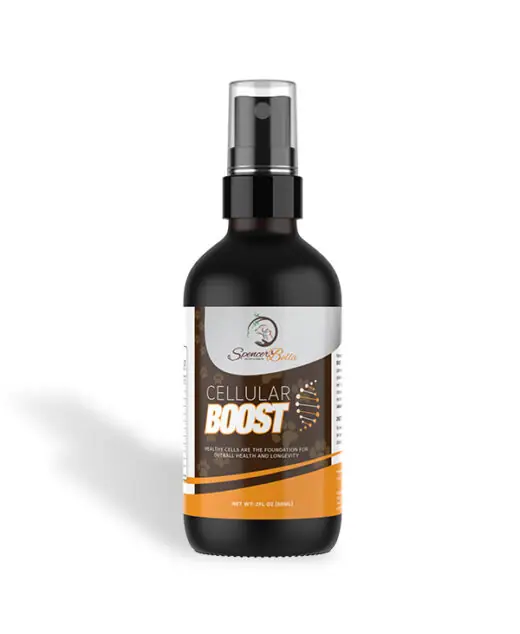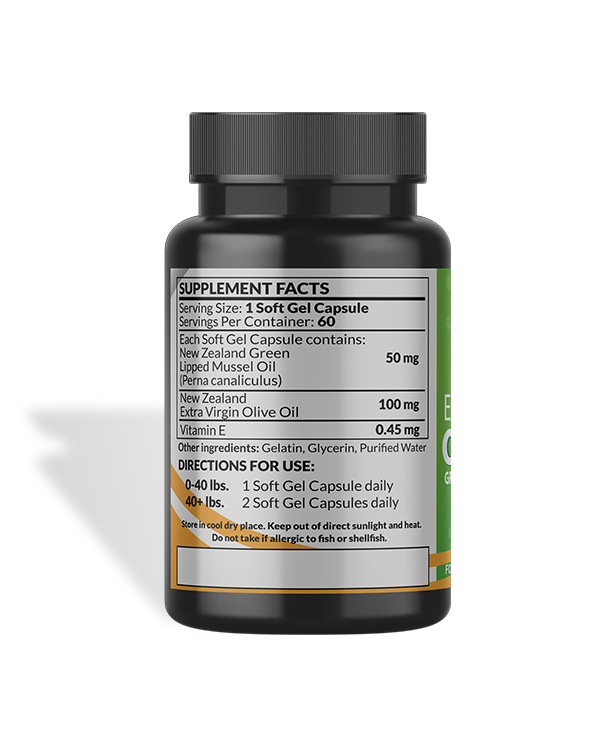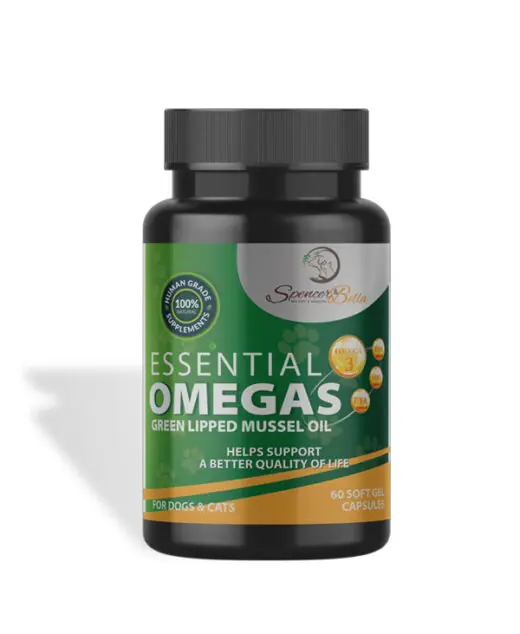For your dog’s health, vigilance is key. Dogs, like humans, can suffer from inflammation, potentially leading to health issues if ignored. Yet, one often neglected aspect is breed-specific tendencies regarding health problems, including inflammation. In this article, we will explore breed-specific inflammation tendencies and the factors determining when proactive care becomes essential. These factors include breed-specific health concerns, size, age, and lifestyle. This insight will empower responsible pet owners to tailor their pet’s care, considering their unique needs. Let’s delve into how your dog’s breed, size, age, and lifestyle relate to inflammation, equipping you to recognize early signs and ensure your furry friend thrives.
Breed-Specific Tendencies Toward Inflammation
Understanding your dog’s breed-specific tendencies toward inflammation is a vital aspect of preemptive pet care. Different dog breeds have varying genetic predispositions to certain health issues, including those related to inflammation. Some breeds are more susceptible to specific inflammatory conditions, which require careful attention and early detection.
- Basset Hounds: Ear and Eye Conditions
Basset Hounds, with their long ears and droopy eyes, are more susceptible to ear infections and eye conditions, both of which can involve inflammation.
- Signs to Look For: Redness, itching, and discharge in the ears; squinting, excessive tearing, or redness in the eyes.
- Boxers: Boxer Cardiomyopathy
Boxers may develop Boxer Cardiomyopathy, a condition related to inflammation of the heart muscle, underlining the importance of monitoring their heart health.
- Signs to Look For: Coughing, fatigue, weakness, and difficulty breathing; reduced exercise tolerance.
- Bulldogs: Skin Fold Dermatitis
Bulldogs, known for their characteristic wrinkled skin, are at risk of skin fold dermatitis, an inflammatory condition that necessitates diligent cleaning and care.
- Signs to Look For: Redness, swelling, and odor in skin folds; itching and discomfort.
- Cocker Spaniels: “Cocker Spaniel Ear” (Otitis Externa)
Cocker Spaniels can experience otitis externa, an inflammatory ear condition commonly known as “Cocker Spaniel Ear,” which emphasizes the need for regular ear care.
- Signs to Look For: Ear odor, discharge, shaking of the head, and scratching at the ears.
- Dachshunds: Intervertebral Disc Disease (IVDD)
Dachshunds, with their unique body shape, are prone to intervertebral disc disease (IVDD), leading to spinal inflammation and pain. Early intervention is crucial.
- Signs to Look For: Back pain, reluctance to move, dragging hind legs, yelping when touched on the back.
- German Shepherds: Autoimmune Conditions
German Shepherds have a higher predisposition to autoimmune conditions, where the immune system attacks the body’s own tissues, underscoring the need for prompt diagnosis and management.
- Signs to Look For: Joint pain and swelling, skin rashes, lethargy, and unexplained weight loss.
- Golden Retrievers: Cancer (Lymphoma and Hemangiosarcoma)
Golden Retrievers are prone to cancer, including lymphoma and hemangiosarcoma, which can involve inflammation in affected tissues, making regular check-ups vital.
- Signs to Look For: Enlarged lymph nodes, changes in appetite, weight loss, and weakness.
- Labrador Retrievers: Joint Issues (Hip and Elbow Dysplasia)
Labrador Retrievers, known for their friendly nature, are susceptible to joint issues like hip and elbow dysplasia, potentially leading to joint inflammation and pain. Early intervention and joint care are essential for their well-being.
- Signs to Look For: Limping, stiffness, difficulty rising, and decreased activity.
- Pugs: Respiratory Issues
Pugs, as brachycephalic dogs, may experience respiratory issues that can lead to airway inflammation. Thus, breathing and weight management become important considerations.
- Signs to Look For: Labored breathing, snoring, coughing, and exercise intolerance.
- Shih Tzus: Brachycephalic Airway Syndrome
Shih Tzus, like other brachycephalic breeds, can also experience brachycephalic airway syndrome, leading to respiratory issues and potential inflammation in the airways.
- Signs to Look For: Noisy breathing, snorting, gagging, and difficulty breathing during exercise or in hot weather.
It is important to note that while these breed-specific tendencies exist, individual variation within breeds occurs. Not all dogs of a particular breed will necessarily develop these conditions. Understanding these tendencies allows you to be a more informed and committed guardian of your furry friend’s well-being.
Size and Age: Factors to Consider
The size and age of your beloved canine companion are key variables that significantly influence when you should start being concerned about inflammation and its potential impact on their health.
Size Matters
The size of your dog plays a pivotal role in their overall health and susceptibility to inflammation-related issues. Larger dog breeds tend to age more rapidly than their smaller counterparts. This accelerated aging process can manifest in many ways, one of which is their vulnerability to age-related inflammation at an earlier stage in life.
Larger breeds, such as Great Danes or Saint Bernards, exhibit signs of aging, including inflammation-related conditions, earlier than smaller breeds. This is partly due to the physiological differences between larger and smaller dogs. Their organs and systems, including joints and tissues, experience more wear and tear over time, making them more susceptible to inflammation-related health concerns.
Conversely, smaller dog breeds, like Chihuahuas or Dachshunds, tend to have longer lifespans in comparison. As a result, they may not exhibit noticeable signs of inflammation until they reach a more advanced age. It is essential for pet owners to be aware of these size-related differences and adapt their monitoring and care routines accordingly.
Age as a Critical Factor
Age plays a critical role in understanding when to watch for inflammation in dogs. Young pups usually have strong immune systems, maintaining their overall health, including inflammation-related issues effectively. However, aging brings natural changes that increase vulnerability to inflammation. These changes involve the immune system’s efficiency decline and reduced tissue repair and regeneration ability. Consequently, older dogs may face more frequent and severe inflammation-related conditions.
Adapting care routines is crucial as dogs mature. For older dogs, regular vet check-ups become even more essential to spot and address inflammation-related issues promptly. Dietary tweaks, joint supplements, and lifestyle adjustments can also reduce the impact of age-related inflammation, ensuring your senior dog enjoys a comfortable and joyful life. Understanding these age-related dynamics empowers pet owners to provide tailored care in line with their dog’s specific life stage and needs.
Lifestyle and Activity Levels: Determinants of Inflammation Risk
Your dog’s lifestyle and activity levels serve as pivotal factors in determining their susceptibility to inflammation-related health issues. These aspects play a significant role in influencing the overall well-being of your canine companion.
- Sedentary Lifestyle:
Dogs that lead sedentary lives characterized by minimal physical activity and exercise are at a heightened risk of encountering inflammation-related problems, particularly those associated with obesity and joint health. When dogs do not engage in regular physical activity, their metabolic rate tends to slow down, making it easier for them to gain excess weight.
About 56% of dogs in the United States are considered overweight or obese, which is a well-known risk factor for inflammation, as it places added strain on their joints and internal organs. Excess weight can lead to chronic inflammation, especially in the joints, exacerbating conditions such as osteoarthritis. Pet owners can mitigate this risk by encouraging and incorporating regular exercise into their dog’s routine. Even daily walks or playful activities in the yard can help maintain a healthy weight and reduce the likelihood of inflammation-related issues.
- High Activity:
On the other end of the spectrum, active dogs, especially those involved in strenuous physical activities or sports, may experience wear and tear on their joints and tissues. While physical activity is essential for overall health, excessive or intense exercise without proper precautions can potentially lead to inflammation.
Proper warm-up, cool-down, and recovery routines are vital for active dogs to prevent inflammation-related injuries. Ensuring that your active dog receives appropriate rest and recuperation between activities can help reduce the risk of overexertion and subsequent inflammation.
- Dietary Habits:
Diet plays a fundamental role in inflammation susceptibility. Poor nutrition, including an imbalanced or inappropriate diet, can result in obesity and other health issues, making dogs more prone to inflammation. Excessive calorie intake can contribute to obesity, which, as mentioned earlier, is a significant risk factor for inflammation.
To mitigate inflammation risks, it is essential to provide your dog with a balanced diet that caters to their specific age and activity level. Consulting with your veterinarian can help determine the most appropriate diet plan for your canine companion, ensuring that their nutritional needs are met without excess calorie intake.
- Environmental Factors:
Environmental factors can impact your dog’s inflammation risk. Allergens and pollutants in their environment can trigger allergic reactions, leading to inflammation in various body parts. If you live in highly polluted areas, take precautions like limiting outdoor time during peak pollution, ensuring clean indoor air, and maintaining grooming and cleaning routines. Understanding how these factors intersect with breed, size, and age helps tailor your dog’s care for a healthier, inflammation-free life. In the next sections, we’ll discuss recognizing inflammation signs and preventive measures for your dog’s well-being.
The Role of Supplements in Reducing Inflammation and Promoting Your Dog’s Longevity: Cellular BOOST and Essential OMEGAS
As a devoted dog owner, you want to provide your furry friend with the best possible care to ensure a long and healthy life. While a balanced diet and regular exercise are foundational to your dog’s well-being, supplements can play a crucial role in supporting their overall health and addressing specific needs, notably in reducing inflammation. Among the many supplements available, Cellular BOOST and Essential OMEGAS stand out as exceptional choices for promoting your dog’s vitality and longevity by actively combating inflammation.
-
Cellular BOOST: Enhancing Cellular Function and Immune Resilience
- Cellular Health: Cellular BOOST is a premium supplement designed to enhance cellular function in dogs. It provides essential nutrients that support the vitality and resilience of your dog’s cells. Healthy cells are the building blocks of overall health, and when they function optimally, your dog is better equipped to combat various health challenges, including inflammation.
- Immune System Support: A robust immune system is essential for fighting off infections, managing inflammation, and maintaining well-being. Cellular BOOST bolsters your dog’s immune system, helping them ward off illnesses and recover more efficiently.
- Reducing Inflammation: One of the key benefits of Cellular BOOST is its role in reducing inflammation. By promoting cellular health, this supplement aids in mitigating the inflammatory responses that can contribute to various health issues, such as joint problems, skin disorders, and autoimmune conditions.
- Anti-Aging Properties: Cellular BOOST‘s impact on cellular function extends to anti-aging benefits. By supporting cell regeneration and repair, it can help your dog stay active, vibrant, and youthful throughout their life, all while actively working to reduce inflammation.
-
Cellular BOOST
$35.00 - or Subscribe and Save 10%
-
Essential OMEGAS: Nourishing Your Dog’s Body from Within
- Omega-3 Fatty Acids: Essential OMEGAS is a nutritional powerhouse, providing the benefits of over 30 Omega-3 fatty acids, including EPA, DHA, and ETA, which are only found in green-lipped mussel oil. These fatty acids are renowned for their potent anti-inflammatory properties, making them crucial for maintaining overall health, especially when it comes to inflammation-related conditions.
- Joint Health: The extensive array of Omega-3s in Essential OMEGAS, along with the inclusion of Chondroitin and Glucosamine, has a profound impact on joint health. These compounds help reduce joint inflammation, alleviate stiffness, and promote mobility, ensuring that your dog stays active and agile, even as they age.
- Heart and Circulatory Support: Proper blood flow is essential for delivering oxygen and nutrients to cells throughout the body. Omega-3s support cardiovascular health, helping to keep your dog’s circulatory system in optimal condition while actively reducing inflammation.
In Essential OMEGAS, the second ingredient, Extra Virgin Olive Oil, is a notable addition. New Zealand Olive Oil is recognized for its health benefits, offering a healthy source of fats. It contains high levels of antioxidants and mono-unsaturated fats, particularly in extra virgin olive oil, which help safeguard against heart disease. These active substances also play a role in reducing the risks associated with strokes and blood clots.
Furthermore, EVOO (Extra Virgin Olive Oil) is also rich in essential nutrients, including vitamins K and E, along with antioxidants, making it a valuable addition to Essential OMEGAS for your pet’s heart and circulatory support.
- Skin and Coat Health: In addition to their anti-inflammatory effects, omega-3s contribute to healthy skin and a shiny coat. They can alleviate skin issues related to inflammation and allergies, keeping your dog comfortable and looking their best.
Essential OMEGAS goes even further in promoting skin and coat health. The third ingredient in Essential OMEGAS is Vitamin E, an essential nutrient that plays a crucial role in maintaining healthy skin and coat in dogs. Vitamin E is known for its antioxidant properties, which help protect the skin from damage caused by free radicals and oxidative stress. It also supports skin cell regeneration, ensuring that your dog’s skin remains in excellent condition. With the combined benefits of omega-3 fatty acids and Vitamin E, Essential OMEGAS provides comprehensive support for your pet’s skin and coat, helping them maintain a healthy and vibrant appearance.
-
Essential OMEGAS
$49.00 - or Subscribe and Save 10%
Why These Supplements Matter
The combination of Cellular BOOST and Essential OMEGAS offers a comprehensive approach to reducing inflammation and promoting your dog’s health and longevity. By addressing cellular function, immune system strength, inflammation reduction, and overall well-being, these supplements work synergistically to provide your dog with the support they need to thrive.
Supplements are particularly beneficial for breeds predisposed to inflammatory conditions. They help manage inflammation, alleviate discomfort, and reduce the risk of related health issues. Whether your dog is still young or entering their senior years, these supplements can make a remarkable difference in their quality of life by actively reducing inflammation and allowing them to enjoy a long, active, and inflammation-free journey by your side.
Incorporating Cellular BOOST and Essential OMEGAS into your dog’s daily routine is a proactive step toward ensuring they live their best, healthiest, and most vibrant life, actively reducing inflammation.
In conclusion, being attuned to the breed-specific tendencies and individual needs of your canine companion is paramount in understanding when to be concerned about inflammation. By recognizing the unique risks associated with certain breeds, considering factors such as size, age, and lifestyle, and incorporating preventative measures, you can be a vigilant guardian of your dog’s well-being. Regular veterinary check-ups, a balanced diet, exercise, and the strategic use of supplements like Cellular BOOST and Essential OMEGAS can not only help reduce inflammation but also ensure your beloved pet enjoys a healthier and more vibrant life. Embrace this knowledge, and together with your furry friend, embark on a journey toward a life free from the burdens of unchecked inflammation.
Q & A
Q: What are the most common signs of inflammation in dogs?
A: Common signs of inflammation in dogs include redness, swelling, heat, pain, lethargy, loss of appetite, vomiting, diarrhea, changes in behavior, and increased thirst.
Q: How can I reduce inflammation in my dog’s joints?
A: To reduce joint inflammation in dogs, consider supplements like Essential OMEGAS, maintain a healthy weight, provide regular exercise, and consult your vet for anti-inflammatory medications if needed.
Q: What dog breeds are prone to inflammatory skin conditions?
A: Breeds like Bulldogs, Cocker Spaniels, and Shih Tzus are prone to inflammatory skin conditions due to their specific genetic characteristics.
Q: Can supplements like Cellular BOOST and Essential OMEGAS help with arthritis in dogs?
A: Yes, Cellular BOOST and Essential OMEGAS can be beneficial for dogs with arthritis as they help reduce inflammation and promote joint health.
Q: When can I begin administering Cellular BOOST and Essential OMEGAS supplements to my dogs?
A: You can start as early as six months of age.
Q: What is the role of diet in managing inflammation in dogs?
A: Diet plays a significant role in managing inflammation in dogs. Providing a balanced diet with essential nutrients can help reduce the risk of inflammation-related health issues.








